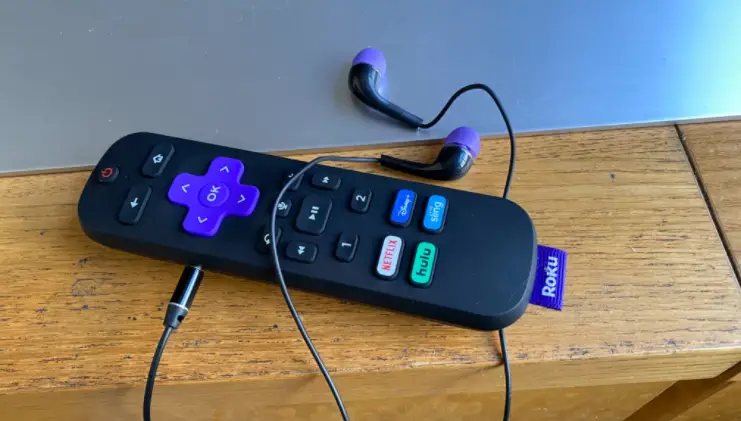Many electronic devices and computers have a USB connection. Some devices even come with a USB cable. What do all these cables serve and why is it important which one you choose?
It can be difficult to understand all of this. This article will cover everything you need about the USB standard. It includes how to identify different types of USB cables and what they do.
6 Common USB Cable Types and Their Uses
Although USB is universally recognized, there are many types of USB cables. This is why? They serve different purposes, as it turns out.
These are the most popular types of USB connectors and cables:
- Type A: This is the standard rectangular, flat interface you will find at one end of almost every USB cable. Many computers have several USB-A ports to connect peripherals. They are also found on TVs and game consoles. The cable inserts only in one direction.
- Type B: A connector that is almost square, used mainly for printers and other powered devices connecting to a computer. These connectors are not as common nowadays, since most devices use a smaller connection.
- Mini USB: This connector is smaller than the one used for mobile devices. These connectors are not as common nowadays, but you will still find them on certain devices that are mostly made by Sony. These include cameras, the PlayStation 3 Controller, MP3 players and other similar devices.
- Mini-USB: A past standard that is slowly losing popularity for mobile and portable devices. It is smaller than the mini-USB. Although you can still find micro-USB in some smartphones and tablets, as well as USB battery packs and game controllers on many devices, many people have switched to USB-C.
- Type C: This new type of USB cable is called. This reversible connector has higher transfer rates and greater power than other USB types. It can also handle multiple functions. X. We discuss USB-C more below.
- Lightning: Although this isn’t a USB standard, it is Apple’s proprietary connector that connects to certain iPad models and some AirPods. It is similar in size to USB-C and is standard on all Apple devices since September 2012. It’s a similar size to USB-C and is standard on all Apple devices released since September 2012.
Most USB cables will have two types of ends. The device is powered by the type A end, while the type B end receives power. This is done to avoid potential damage caused by two computers being connected via USB-A.
Although “type-B” is not usually in their names, the Mini or Micro connectors can be considered smaller versions of type-B.
The cables that you will use most and which you should replace are micro-USB and USB-C
USB Speed Standards
USB connections are just half of the story. USB has been through many standards that have different data transfer speeds. A cable’s connector does not necessarily indicate that it follows a particular standard.
These are the main versions of USB’s speed:
- USB 1.x is the original standard. It’s considered outdated by modern benchmarks. It is very unlikely that you will find devices using this standard today.
- USB2.0 introduced many new USB norms, such as support for Mini and micro cables, USB OTG (see further) and many more. This is the fastest USB speed that’s still being used today. It’s used in cheap flash drives, keyboards and other devices. A few USB 2.0 ports are still available on most computers.
- USB 3.x currently stands as the standard for USB speeds. It is faster than USB 2.0 and therefore recommended for external hard drives. A connector or USB 3.x port can be identified by its blue color. A few USB 3.0 ports have an SS sign (which stands to Superspeed). High-quality flash drives are compatible with this standard, as well as most new computers that have at least one USB 3.0 port.
- USB4.0 is currently the most recent standard. However, it’s still not widely available at the time this article was written. It will be the standard over the next few years, just as USB 3 took a while for it to catch on.
A USB 2.0 device can be used in a USB 3 or USB 3 port. However, neither configuration offers additional speed benefits. There have been many “generations” of USB 3. This can be confusing. For more information, see our comparison between USB-C & USB 3.
Below is a chart that shows which connector types are compatible and with what standards. You will notice that micro-USB devices that support USB 3. x use a different plug. This plug is often found on external hard drives.
What is USB-C?
USB-C, the latest standard for cable technology, has many benefits. It is smaller than USB A, reversible, and faster. USB-C can receive and deliver a lot more power than previous versions of USB. Apple MacBooks only now have USB-C ports.
USB-C is capable of transferring data, powering devices, and displaying information on a monitor. For more information, see our explanation on USB Power Delivery.
Cables with USB-C connectors at both ends, unlike USB-A cables, are common and allow full use of the device’s powers. But, USB-C-to-USB-A cables are common and allow for compatibility with older devices.
If your Android tablet or phone is older, it will likely use USB-C rather than micro-USB. A few tablets and laptops have a USB-C port. The Nintendo Switch also uses it to power its batteries. To make the switch from USB-C to USB, some USB C to USB-A adapters might be needed.
What is USB on-the-Go?
USB On-The-Go (OTG), a standard that is available on many Android phones, allows portable devices to function as USB hosts.
Let’s suppose you have an external hard drive, a smartphone and a laptop. How do you move files from an external drive to a smartphone? It is possible to transfer files from an external drive to a laptop and then to the smartphone. This is a common, but tedious, method.
The smartphone can host an external drive with USB OTG and the phone will not need to be connected to a laptop. This is just one of many ways you can use USB OTG.
You will need an adapter to use USB OTG. This adapter is similar to the one above. It allows you to plug a USB cable into your phone. Some devices may not support OTG. You can check the manual of your phone or download an app such as OTG Checker.
Apple’s mobile devices do not support USB OTG. However, you can still connect external storage devices with your iPhone and iPad.
Tips for Buying USB Cables
A micro-USB cable is likely to be used by older Android phones and tablets. Micro-USB will be required at times by even those who are not part of Apple’s ecosystem or have USB-C ports on their smartphones. You can still see it on certain Bluetooth speakers and battery packs.
Micro-USB cables are a common accessory to many gadgets. They’re often included with almost every device. You can use the same cables with different devices because they are interchangeable.
It’s tempting to choose the cheapest cable when it comes time to purchase a new one. This is usually a bad decision. You can have all sorts of problems with poorly made cables. These can range from minor problems such as slow charging or unreliable performance to more serious issues like breaking or becoming a fire hazard.
This is especially true for USB-C. Many cables could have caused damage to devices in the early days of USB-C. This problem is no longer a problem with modern cables, but it’s still important to ensure your charger is safe.
You don’t need to purchase a cable directly from the manufacturer of your phone. However, it is advisable to stick with well-respected brands. Although it is a slight price difference, it is well worth it.
Cable length is another important aspect. While short cables can be convenient for portability, they can also cause you to spend too much time charging your phone while it is still on the ground. A cable that is too long can cause problems with mobility, tangles more easily, and could pose a danger to your safety.
A charging cable should be at least three feet long. This allows you to carry your phone around while charging your battery. These cables are also long enough to reach the outlet and to the desk. A six-foot cable is usually sufficient if you need to keep your device from being charged.
The Best USB Cables to Meet Every Need
Are you looking for a new cable but aren’t sure where to start? These are some recommendations for each type.
This micro-USB cable pack from Anker is for you. This pack includes three six-foot cables, three three-foot cables, and two one-foot cables.
Do you need a USB-C Cable? OULUOQI’s USB cables will have you covered. This three-pack includes two USB-C to USBA cables and a micro-USB-to-USB-C adapter. You can also find many other excellent USB-C cables.
MFi-certified products are recommended for iPhone users. This 2-pack of six-foot Anker Lightning cable is braided for added durability.
USB cables finally make sense
We have covered what types of USB connectors are available, the standards for USB transfer, how to purchase quality cables, and many other topics. We hope you now have a better understanding of USB and how it can be used on all your devices.
USB is only one type of cable. You should be familiar with many other cables that can be used to connect to a computer.



